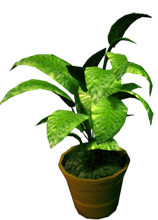The best time-saver activity to maintain healthy and beautiful gardens is to mulch your garden. This not only helps in retaining soil moisture but also inhibits the germination and growth of harmful weeds, which may compete with your plants for essential nutrients and water, thus obstructing a proper and healthy plant growth.

Mulching has a wide range of benefits which most of us are unaware of. It can be described as the most economical and intelligent way to get rid of the tedious task of pulling out weeds from your garden and keeping your plants healthy and glowing, so that you can get more time to enjoy your yard. Covering the soil helps to keep it moist for longer time, so you have to spend much less time watering the soil. Proper mulching not only helps conserve water but also shields your plants' roots from temperature extremes and discourages the growth of weeds.
Let us now have a deeper look, into the process and its beneficial outcomes.Mulching is basically divided into two types-Organic and Inorganic.
Organic mulches include formerly living material such as chopped leaves, twigs, paper, straw, grass clippings, wood chips, shredded bark, sawdust, compost etc.
Shredded leaves, grass clippings and compost are best mulching materials for your vegetable gardens, as they are nutrient and nitrogen rich mulches which can improve the soil quality as they decompose.
Grass clippings and fallen leaves are the best easily available mulching materials, which can be readily obtained from your own garden.
Inorganic mulches include gravel, stones, pebbles or black plastic.
Decorative gravel and stone mulches not only add colour and texture to the space between the plants but also provides a neat look and doesn’t get washed away easily, thus it need not be replenished from time to time.
Black plastic mulches are good for plants like tomato, pepper, brinjal, watermelons and pumpkins which prefer warm soil.
The two important things you should keep in mind while mulching are-
- Lay the mulch after the soil has been cleared of all the weeds
- Lay a thick layer of 2-3 inch, so that new weeds cannot come out through the layer of mulch. Do not try to overdo the layer as it may suffocate the roots.
There are certain other things which you must be knowing before starting with the mulching-
- When Low-nitrogen organic mulches such as wood chips and sawdust decay, nitrogen is temporarily depleted from the soil. So it is necessary that you fertilize the soil first, with a high-nitrogen product to boost soil nitrogen levels.
- Mulch heaped up against woody stems of plants, can cause them to rot as they decompose. So it is preferable to leave some space between the stem and the layer of mulch, probably a 2 inch gap between the two.
Spend some time to spread a layer of mulch in your yard to enjoy the benefits.






















arshad m
posted on 2/1/14 5:01 PM